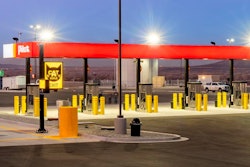Some of the country’s largest trucking companies reported declining revenues and profits in 2019 compared to the year prior in their recent earnings reports, which comes as no surprise. The slowdown in economic growth last year, which led to sagging freight volumes and trucking rates, was one of the biggest and most discussed trends of the year.
The tough trucking environment in 2019 led to a spike in carrier bankruptcies from the year prior, cutbacks at some fleets, consolidation among others and a general slump in profitability across most of the industry.
Here’s a look at how large, publicly traded truckload trucking companies fared in 2019 and their insights into the industry in 2019 – from excessive capacity, shippers seeking cheaper rates and sluggish freight demand. A few were able to out-earn 2018, but they were the exception, not the rule.
—
“For the fourth quarter and all of 2019, we battled a difficult operating environment, marked by excess industry capacity, lackluster freight volumes, intense competition from freight brokerage competitors, and higher operating costs,” said David Parker, Covenant chairman and CEO. Parker says he expects improvements in 2020 – mostly weighted toward the second half of the year.
Covenant‘s (No. 35 in the CCJ Top 250) total revenue grew slightly to $894.5 million in 2019, up from $885.5 million 2018. However, net income dipped, due in large part to increased expenditures on purchased transportation (brokering loads to other carriers) and driver wages. Earnings per share were 46 cents in 2019, compared to $2.32 in 2018.
—










